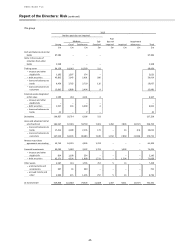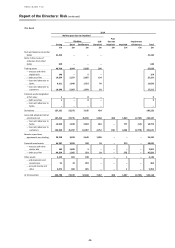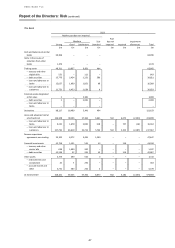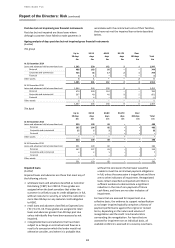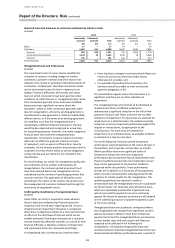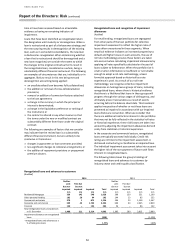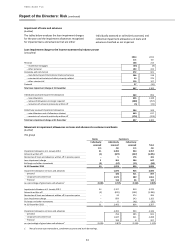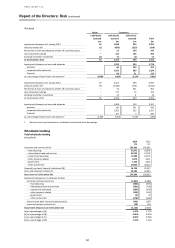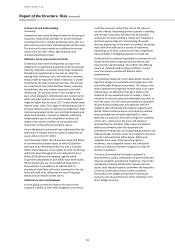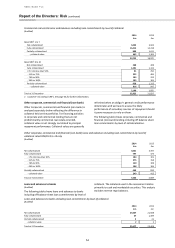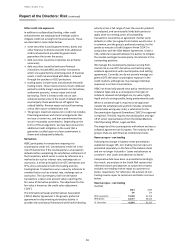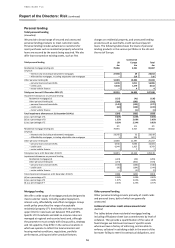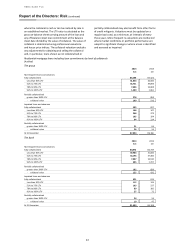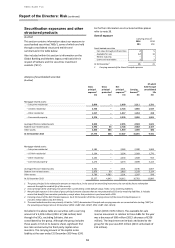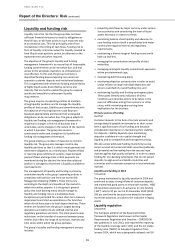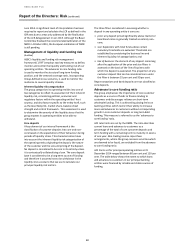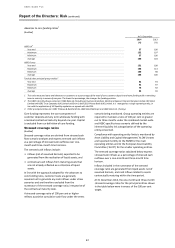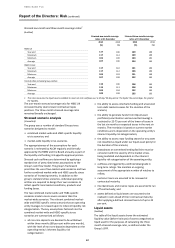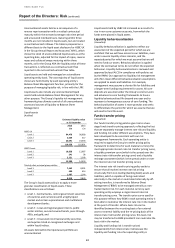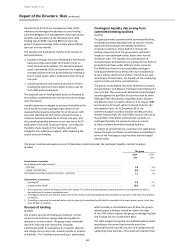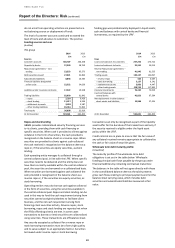HSBC 2014 Annual Report Download - page 57
Download and view the complete annual report
Please find page 57 of the 2014 HSBC annual report below. You can navigate through the pages in the report by either clicking on the pages listed below, or by using the keyword search tool below to find specific information within the annual report.
HSBC BANK PLC
Report of the Directors: Risk (continued)
55
Other credit risk exposures
In addition to collateralised lending, other credit
enhancements are employed and methods used to
mitigate credit risk arising from financial assets. These
are described in more detail below:
• some securities issued by governments, banks and
other financial institutions benefit from additional
credit enhancement provided by government
guarantees that cover the assets;
• debt securities issued by corporates are primarily
unsecured;
• debt securities issued by banks and financial
institutions include ABSs and similar instruments
which are supported by underlying pools of financial
assets. Credit risk associated with ABSs is reduced
through the purchase of CDS protection;
• trading assets include loans and advances held with
trading intent. These mainly consist of cash collateral
posted to satisfy margin requirements on derivatives,
settlement accounts, reverse repos and stock
borrowing. There is limited credit risk on cash
collateral posted since in the event of default of the
counterparty these would be set off against the
related liability. Reverse repos and stock borrowing
are by their nature collateralised; and
• The group’s maximum exposure to credit risk includes
financial guarantees and similar arrangements that
we issue or enter into, and loan commitments that
we are irrevocably committed to. Depending on the
terms of the arrangement, we may have recourse to
additional credit mitigation in the event that a
guarantee is called upon or a loan commitment is
drawn and subsequently defaults.
Derivatives
HSBC participates in transactions exposing it to
counterparty credit risk. Counterparty credit risk is the
risk of financial loss if the counterparty to a transaction
defaults before completing the satisfactory settlement of
the transaction, which varies in value by reference to a
market factor such as interest rate, exchange rate or
asset price. It arises principally from OTC derivatives and
SFTs and is calculated in both the trading and non-
trading books. Transactions vary in value by reference to
a market factor such as interest rate, exchange rate or
asset price. The counterparty risk from derivative
transactions is taken into account when reporting the
fair value of derivative positions. The adjustment to the
fair value is known as the credit value adjustment
(‘CVA’).
The International Swaps and Derivatives Association
(‘ISDA’) Master Agreement is the group’s preferred
agreement for documenting derivatives activity. It
provides the contractual framework within which dealing
activity across a full range of over-the-counter products
is conducted, and contractually binds both parties to
apply close-out netting across all outstanding
transactions covered by an agreement if either party
defaults or other pre-agreed termination events occur. It
is common, and the group’s preferred practice, for the
parties to execute a Credit Support Annex (‘CSA’) in
conjunction with the ISDA Master Agreement. Under a
CSA, collateral is passed between the parties to mitigate
the market-contingent counterparty risk inherent in the
outstanding positions.
We manage the counterparty exposure arising from
market risk on our OTC derivative contracts by using
collateral agreements with counterparties and netting
agreements. Currently, we do not actively manage our
general OTC derivative counterparty exposure in the
credit markets, although we may manage individual
exposures in certain circumstances.
HSBC has historically placed strict policy restrictions on
collateral types and as a consequence the types of
collateral received and pledged are, by value, highly
liquid and of a strong quality, being predominantly cash.
Where a collateral type is required to be approved
outside the collateral policy (which includes collateral
that includes wrong way risks), a submission to the
Documentation Approval Committee (‘DAC’) for approval
is required. The DAC requires the participation and sign-
off of senior representatives from the Global Markets
Chief Operating Officer, Legal and Risk.
The majority of the counterparties with whom we have a
collateral agreement are European. The majority of the
group’s CSAs are with financial institutional clients.
Reverse repos – non trading
Following the change in balance sheet presentation
explained on page 155, non-trading reverse repos are
presented separately on the face of the balance sheet
and are no longer included in ‘Loans and advances to
customers’ and ‘Loans and advances to banks’.
Comparative data have been re-presented accordingly.
As a result, any analysis in the Credit Risk section that
references loans and advances to customers or banks
excludes non-trading reverse repos to customers or
banks, respectively. For reference, the amount of non-
trading reverse repos to customers and banks is set out
below.
Reverse repos – non trading
(Audited)
2014
2013
£m
£m
With customers
19,468
31,310
With banks
22,477
30,215
31 December
41,945
61,525


